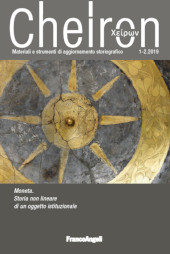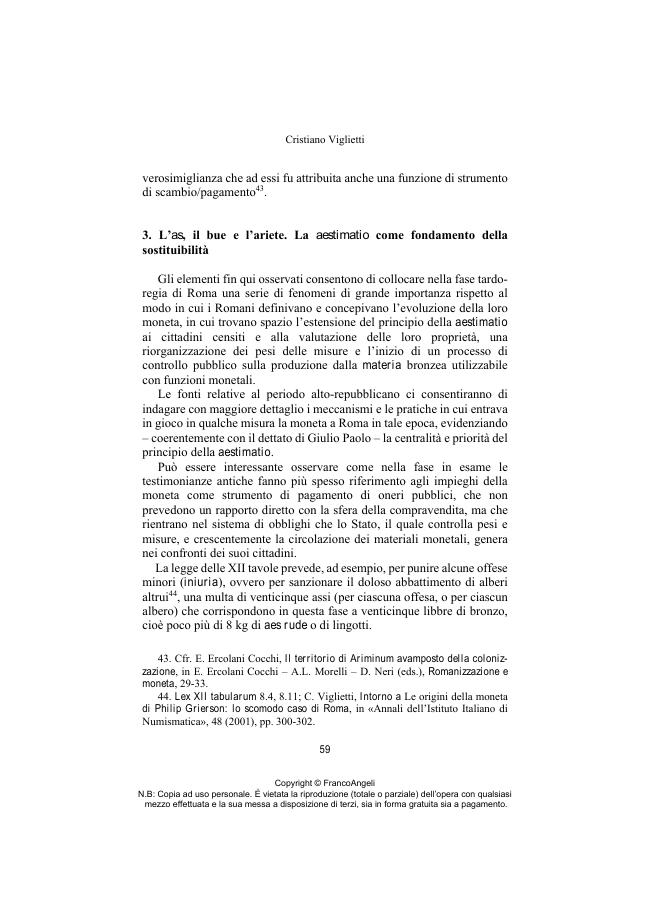Aestimatio : il ruolo della moneta in una società censitaria (quasi) senza contanti : Roma tra il VI e gli inizi del IV secolo a.C.
46-71 p.
Muovendo dagli elementi di "teoria nativa" sulle origini della moneta presenti in alcune testimonianze antiche, questo contributo intende riflettere sul modo in cui le forme e funzioni della moneta dovevano operare nella Roma arcaica. La centralità che la aestimatio giocava nel census a partire dal VI secolo a.C. dovette contribuire a un maggiore intervento dello Stato nell'emissione di lingotti bronzei destinati a ricoprire funzioni monetali e a una diffusione delle attività estimatorie in numerosi aspetti della vita sociale. A tali attività, nella fase in questione, doveva corrispondere tuttavia solo marginalmente una reale circolazione della moneta bronzea a peso, che poteva essere convertita in equivalenti di altro tipo. [Testo dell'editore].
Drawing upon "local theories" of the origins of money found in some ancient sources, this paper aims to investigate how monetary forms and functions operated in archaic Rome. The central role played by aestimatio in the Roman census from the 6th century BC tended to enhance state intervention in the production of bronze ingots aimed at fulfilling monetary functions, and a wider diffusion of estimation activities in several aspects of social life. However, in this historical phase, estimates in money units scarcely led to a massive circulation of bronze weighed money, which often could be (conventionally or, sometimes, lawfully) converted into equivalents of other kind. [Publisher's text].
-
Articles from the same issue (available individually)
-
Information
ISSN: 1127-8951
KEYWORDS
- Moneta a peso, aestimatio, aes signatum, multe in capi di bestiame, convertibilità della moneta
- Weighed money, aestimatio, aes signatum, fines in cattle, convertibility of money



